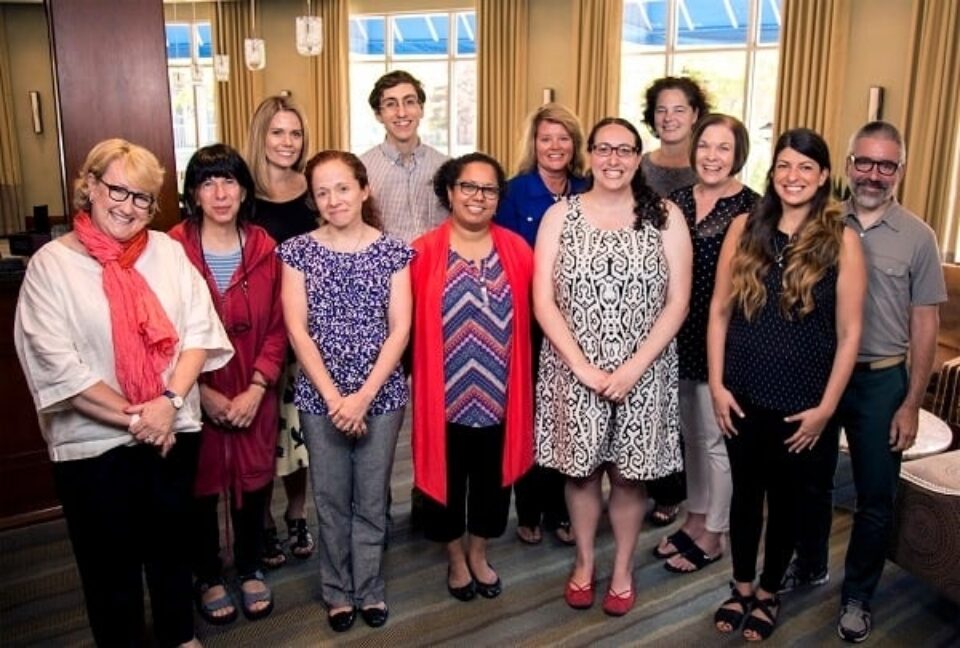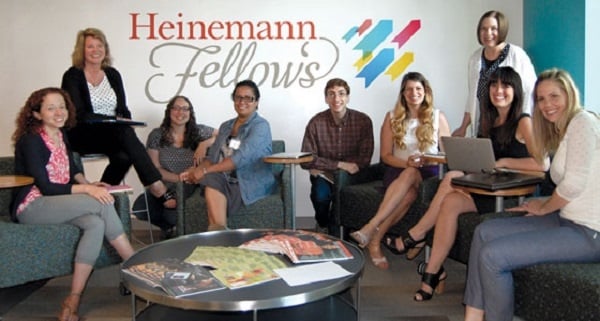
Tamara Ward is a Heinemann Fellow with the 2014–2016 class, and has been an educator for 11 years. In today's post, Tamara updates us on her continuing research project: In what ways does a multidisciplinary learning block in the fifth and sixth grade setting affect the vocabulary students use in their writing?
By Tamara Ward
I teach in a small school of less than 80 kids in rural Montana, which is a glorious but sometimes messy assignment. Often, in this setting, I have smaller class sizes, but I also face the daily challenges of a multi-grade classroom and the isolation that comes from having no other grade-level cohorts. Because of this, I am always searching for effective strategies and solutions for my particular setting. By default, I've become the “Lead Educational Researcher” for my speck on the map as I seek to understand my squirmy and delightfully complex test subjects—my students.
Like an addict, I devour articles or books by renowned educational researchers. After spending a summer sipping lemonade on the porch with Nancie Atwell and Regie Routman, (okay… maybe they were only there with me through their books, but it felt like we were spending time together), I grasped the importance of providing abundant, authentic opportunities for students to read, write, and discuss. Yet how exactly could I accomplish this and also teach all subject areas in a single school day? After months of pondering this dilemma, I did what any self-respecting farming community teacher would do—I took out the scythe and cut away everything in my schedule that was not producing thoughtful, productive, and proficient readers and writers.
The first to feel the harsh slash of the blade were worksheets, spelling tests, book reports, and oral language drills. In their place I inserted three hours of reading, discussing, writing, thinking, questioning, and discovering through the lens of social studies and science.
With more time to read and write, students were more proficient in all areas.
Although I wasn’t surprised, I noticed the engagement and excitement for learning increase in my students, and in me! With more time to read and write, students were more proficient in all areas. Amid the positive changes, there was a question I couldn't stop thinking about that led to my current research: In a multidisciplinary literacy workshop block, would students’ increased exposure to higher level, content specific vocabulary help them transfer this vocabulary into their writing and speaking?
As the school year started, I set out to investigate this question. The first task was to gather initial writing samples from each student. I’ll be honest with you, the samples I collected weren’t the best, but at least the students were writing after the long summer and that is always a good thing. I assessed the samples to identify the presence of the following types of words: tier one words which are used in everyday speech and usually learned in the early grades; tier two words, academic vocabulary commonly found in informational texts; and tier three words which are specific to content area fields of study. Almost 98% of all the words my students used in their writing were tier one words with very little evidence of higher level vocabulary.
Next, students completed a self-assessment of vocabulary knowledge from a list of grade level words identified by the Word Up Project. When I first started, I thought students would be quick to evaluate their knowledge of words, thereby invalidating my assessment. I have to admit, the three-page list of roughly 100 words was a little daunting, even for me! My fears were quickly squelched as I observed students taking their time, erasing, and reevaluating their knowledge of different words. The results were interesting. Nearly a third of the words were unknown to all my students. Only a quarter of the words were well known to my students. The remaining words fell somewhere between these two extremes. This assessment confirmed my initial prediction that a literacy block with abundant content area reading and writing would benefit my students.
The last data source came from Fountas & Pinnell’s Benchmark Assessment System. I used an optional assessment to assess word knowledge as students read and pronounced graded word lists. I assessed each student on his current grade level as well as a year below and above. It showed that 80% of my students had grade level knowledge of words, higher than I had anticipated due to giving this assessment at the beginning of the year.
80% of my students had grade level knowledge of words.
With all my initial observations and data collected, I was left to consider the results. My students felt they had some vocabulary knowledge and exposure, and the assessments supported this. Yet it was also clear my students were not transferring this knowledge into their writing, and I was still unsure if they would begin using higher level vocabulary in their speaking as the year progressed due to this extending multidisciplinary literacy block.
My next step was to thoughtfully and explicitly teach vocabulary with the intent of boosting the level of my students’ writing and speaking. What I discovered was interesting and inspiring. Join me next time as I share these exciting and fruitful strategies implemented in my 5th and 6th grade classroom in the middle of farm country. Together we can share struggles, solutions, strategies, and musings—from a rural school perspective.
♦ ♦ ♦ ♦

Tamara Ward is a fifth and sixth grade teacher at Creston Elementary School in Kalispell, MT. Her action research question focuses on the ways a multidisciplinary learning block in the fifth and sixth grade setting affects the vocabulary that students use in their writing.
Read Tamara's previous blog post for Heinemann here.
Follow Tamara's progress on Twitter @TamiJayWard.


